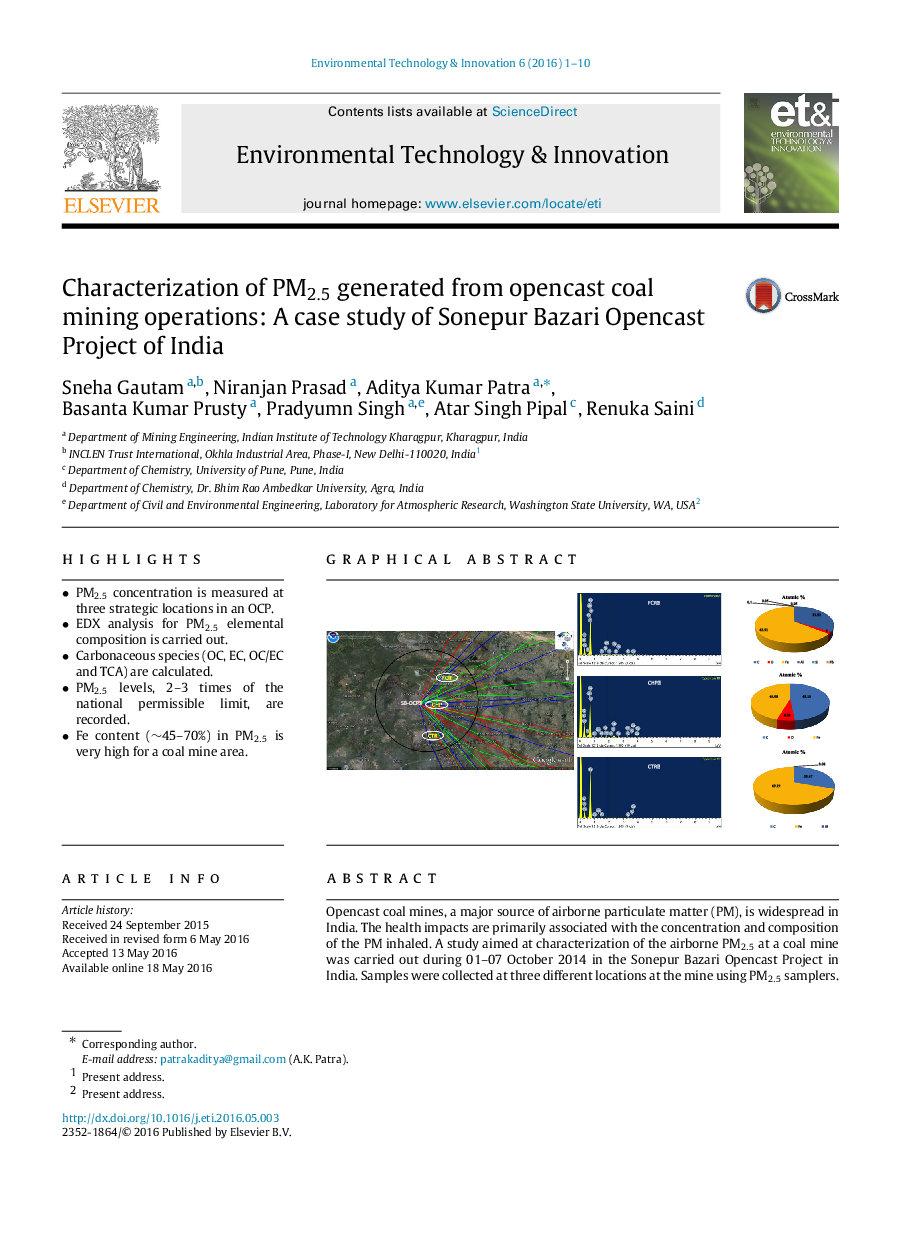| Article ID | Journal | Published Year | Pages | File Type |
|---|---|---|---|---|
| 4428156 | Environmental Technology & Innovation | 2016 | 10 Pages |
•PM2.5 concentration is measured at three strategic locations in an OCP.•EDX analysis for PM2.5 elemental composition is carried out.•Carbonaceous species (OC, EC, OC/EC and TCA) are calculated.•PM2.5 levels, 2–3 times of the national permissible limit, are recorded.•Fe content (∼45–70%) in PM2.5 is very high for a coal mine area.
Opencast coal mines, a major source of airborne particulate matter (PM), is widespread in India. The health impacts are primarily associated with the concentration and composition of the PM inhaled. A study aimed at characterization of the airborne PM2.5 at a coal mine was carried out during 01–07 October 2014 in the Sonepur Bazari Opencast Project in India. Samples were collected at three different locations at the mine using PM2.5 samplers. Collected PM2.5 samples were characterized in terms of surface elemental composition using Energy Dispersive X-ray (EDX) spectroscopy. The PM2.5 levels were 2–3 times of the permissible Indian limits. Surface elemental composition analysis indicates that Fe (∼45–70%) and C (∼30–50%) as the dominant elements amongst all elements present in PM2.5. An average organic carbon (OC) to elemental carbon (EC) ratio of 3.5 indicated diesel vehicle and coal smoke from stockyard as the sources, which is typical to opencast coal mining activities. Forward air mass trajectory analysis using HYSPLIT4 model showed that in addition to the locations nearby the mine getting affected by the PM2.5 emitted from the mine, places as far as 200 km from the mine can also receive the traces of PM2.5. More studies on elemental species characterization of PM2.5 in different coal mining areas will provide better understanding of occupational health hazards to which mine workers exposed due to inhalation of airborne PM.
Graphical abstractFigure optionsDownload full-size imageDownload as PowerPoint slide
